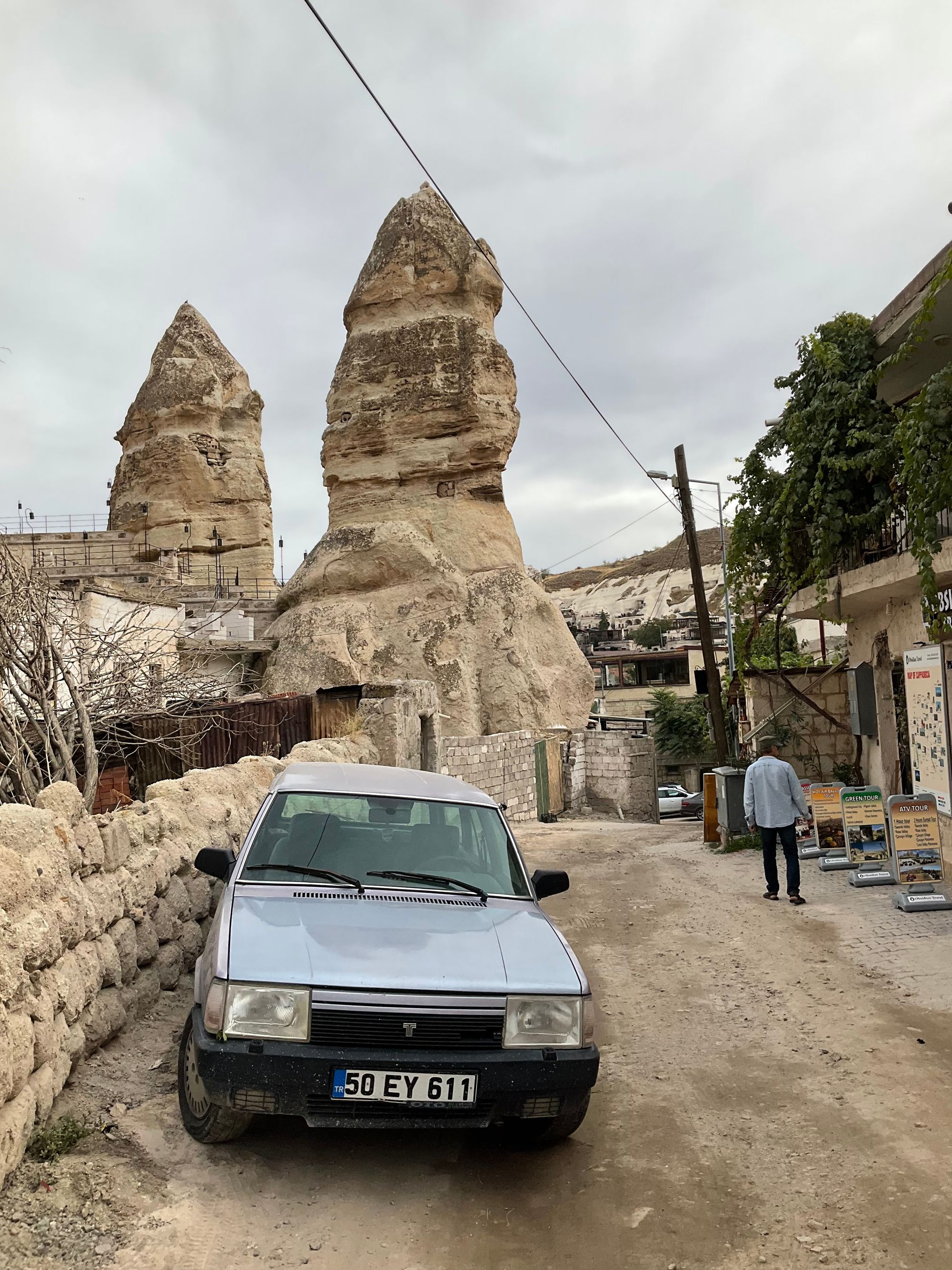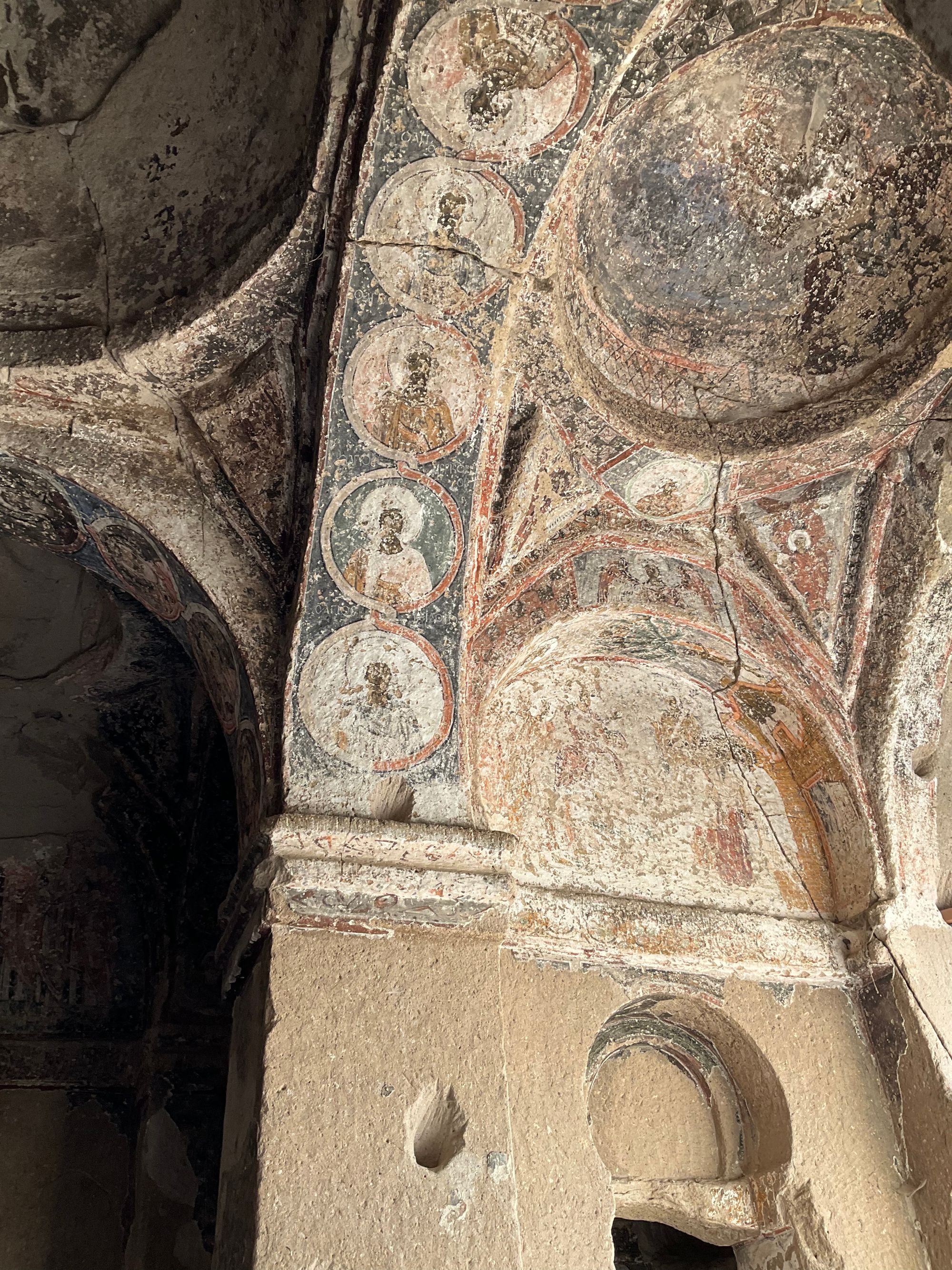Oh no. Horrendous. A terrible explosion. Poor Istanbul.
I was ready to send you my innocent story about travel in Turkey and I heard the news. This country felt perfectly safe for seventeen days. Fifteen million people just in the city of Istanbul going about their business, tourism is booming. The last major terrorist incident was in 2017. One busy street (which our group was never near) wasn't safe today.
Six people killed, 81 injured.
The world can be dangerous. The world is amazing and travel is a wonderful luxury to be appreciated.
I was at the top of the World Trade Center in New York just months before it came down. Travellers keep travelling.
Back to my story, and I hope many more.
Cappadocia
It's the reason I first wanted to go to Turkey.

Forty years ago I read about caves houses and underground cities in a weird landscape in the middle of Turkey. Years later I saw a picture of hot-air balloons floating over the fairy chimneys and cave dwellings and sculpted hillsides.
Turkey was on my bucket list from then on.
If you feel like a little armchair travel, pretty pictures, a little history, please settle in for a peek at the Turkey I had for Thanksgiving this year. It was a tasty treat.

This is the other-worldly landscape of Göreme, one of the most visited towns in the area the Turks call Kapadokya.

Many of the cave homes in the town have been turned into hotels. Dark and cold with spiders on the floor? Not even close. Our room was carved into the rock, but was elegant and exotic, and included a mosaic bathtub.



There's full-on international tourism in this odd little town full of "fairy chimney" hoodoo formations.




I wanted to go underground.
For centuries people found protection from attacking marauders in multi-level underground cities in Cappadocia. We had a guided tour in the oldest one, Kaymakli, first dug out in 7th century BC . Many hundreds of years later when the Roman Empire was not welcoming to Christians, they also retreated to the underground cities to live and worship.
The tunnels were greatly expanded later during the Byzantine-Arab Wars, that's 780-1180 AD when Christians needed protection from Arab dynasties who were newly united by Islam. And wanting to take back control of their land from the Roman Emperors.
Even in the 20th century persecuted minorities found refuge here during the Ottoman Empire. And so on.
Only a fraction of the 8-story complex is open to the public. We went down 4 floors, sometimes crouching through low corridors to see a stable, living spaces, communal kitchen, a church, a wine press, and various ventilation shafts.
They say the whole network of tunnels and rooms could hold 3,000 people underground for weeks at a time.



I like the word for "exit" in Turkish, pronounced like "cheekish", seen here when our guide led us back out into the sunshine.

Next on the Cappadocia itinerary was a lovely 4-kilometer walk in the lush, green Ihlara Valley. I love tourism that includes fresh air and a GORGEous hike on a sunny afternoon.

Restaurants and fresh pomegranate juice and lovely rest areas along the trail welcome visitors from all over the world.



It's so interesting and beautiful.
Medieval monks found refuge in this secret valley and carved their houses and over 50 churches in the soft volcanic rock.
We visited the Ala Church built into the hillside around 1000 AD, parts of the red and blue frescos still visible. Most cave churches had discrete concealed entrances, this façade was massive. There were no attendants, no security of any kind to protect the ancient architectural treasure.



Ever wonder what a whirling dervish really is?
A dervish twirls as part of a complicated prayer ceremony performed by Sufis, a mystical order of Islam founded in the 13th century by the Muslim poet Rumi, who they say liked to twirl in circles while he recited his poetry.
These days dervishes in long white skirts whirl to religious music to abandon the ego and seek spiritual perfection in a meditative trance.
With the fall of the Ottoman Empire after WW1, Ataturk, the father of modern Turkey, outlawed the practise. He wanted the country to be more modern and turned towards western influences.
But in 1956 whirling dervishes were revived as a cultural asset of Turkey. And they've been circling privately and publicly ever since.
What we saw in Cappadocia was an interesting intersection of traditional religious practise and modern tourism. I enjoyed the mezmerizing experience.
Their right hand is turned to the sky, their left hand is open to the earth. There were three sections of whirling in the ritual, always counter-clockwise, each about four minutes duration. In the past they lasted 15 minutes, or even an hour.

Here's the dervish that twirled into my suitcase.

Coming next are the hot-air balloons of Cappadocia. Stay tuned for photos! The ride was fabulous and probably my favourite thing in Turkey.

I heard the flame from our room in the cave hotel, it sounded like a blowtorch. I ran out to the terrace and caught this balloon before it floated out of sight. A nice goodbye on our last morning in Cappadocia.

